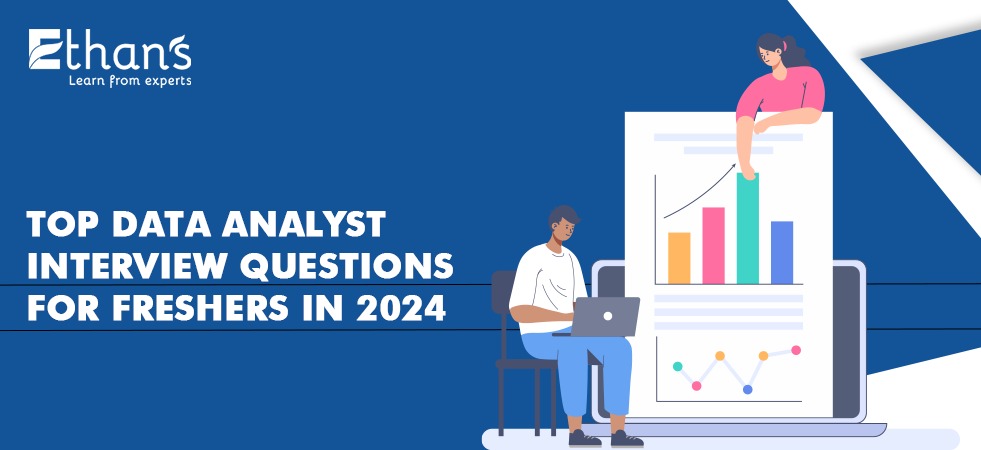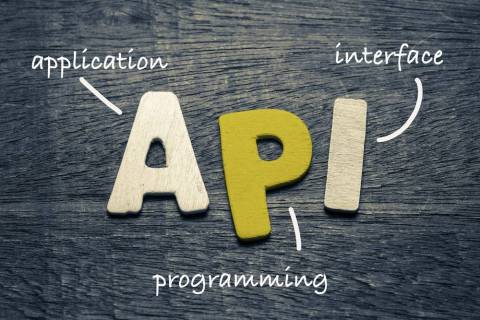In the ever-evolving landscape of technology, the demand for skilled data analysts continues to surge. As we step into 2024, the competition for entry-level data analyst positions is more intense than ever.
Latest Data Analyst Interview Questions
To help freshers prepare for success in their data analyst interviews, we’ve compiled a comprehensive list of the top interview questions and their answers.
1. What is Data Analytics, and Why is it Important?
Data analytics is the process of inspecting, cleaning, transforming, and modeling data to derive valuable insights, and conclusions, and support decision-making. It is crucial in today’s business environment as it empowers organizations to make informed decisions, identify trends, and gain a competitive edge.
2. Differentiate Between Descriptive and Inferential Statistics.
Descriptive statistics summarizes and organizes data, providing a snapshot of its main features. In contrast, inferential statistics conclude and make predictions about a population based on a sample of data.
3. Explain the Steps in the Data Analysis Process.
The data analysis process involves defining the problem, collecting data, cleaning and organizing data, exploring and analyzing the data, drawing conclusions, and communicating findings. Each step is crucial for extracting meaningful insights.
4. What is the Importance of Normal Distribution in Data Analysis?
Normal distribution, also known as the bell curve, is essential in data analysis as it helps in understanding the distribution of data points. Many statistical methods assume a normal distribution, facilitating accurate predictions and analyses.
5. Define Outliers and How to Handle Them.
Outliers are data points significantly different from the rest of the dataset. Handling outliers involves identifying them, determining their cause, and choosing an appropriate method such as removing them, transforming values, or applying statistical techniques.
6. Explain the Concept of Data Cleansing.
Data cleansing involves identifying and correcting errors or inconsistencies in datasets. This process ensures the accuracy and reliability of data, ultimately enhancing the quality of analysis and decision-making.
7. What is the Difference Between Data Warehousing and Data Mining?
Data warehousing involves the storage of large volumes of structured data, while data mining focuses on discovering patterns, correlations, and trends within that data to extract valuable information.
8. How Would You Approach a Data Analysis Project?
Begin by understanding the project requirements, defining goals, and identifying key metrics. Proceed with data collection, cleaning, and exploratory data analysis. Utilize statistical methods and visualization tools to draw meaningful conclusions and present findings effectively.
9. Explain the Term “Regression Analysis.”
Regression analysis is a statistical method that examines the relationship between two or more variables. It helps in understanding how changes in one variable affect another and is widely used in predictive modeling.
10. Discuss Your Experience with Data Visualization Tools.
Highlight any experience with popular data visualization tools such as Tableau, Power BI, or Matplotlib. Emphasize your ability to present complex data in a visually appealing and easily understandable format.
11. What is the Difference Between Data Mining and Machine Learning?
While both data mining and machine learning involve extracting insights from data, data mining focuses on discovering patterns and knowledge from existing data, while machine learning emphasizes developing algorithms that allow a system to learn from data and improve its performance over time.
12. Explain the Concept of A/B Testing in Data Analysis.
A/B testing involves comparing two versions (A and B) of a webpage or app to determine which performs better. In data analysis, it helps assess the impact of changes by randomly assigning users to different versions and analyzing their behavior to make informed decisions about which version is more effective.
13. How Would You Handle Missing Data in a Dataset?
Handling missing data is crucial. Techniques include removing rows with missing values, imputing missing values with statistical measures (mean, median), or using advanced imputation methods like predictive modeling. The choice depends on the nature and extent of missing data.
14. Explain the Concept of Cross-Validation in Machine Learning.
Cross-validation is a technique to assess a model’s performance by dividing the dataset into multiple subsets. The model is trained on a portion and tested on the rest, rotating the subsets. This ensures a more robust evaluation, reducing the risk of overfitting.
15. Define Precision and Recall in the Context of Classification Models.
Precision is the ratio of correctly predicted positive observations to the total predicted positives, emphasizing the accuracy of positive predictions. Recall is the ratio of correctly predicted positive observations to all actual positives, emphasizing the model’s ability to capture all positive instances.
16. What Are the Assumptions of Linear Regression?
Linear regression assumes a linear relationship between the dependent and independent variables, independence of errors, homoscedasticity (constant variance of errors), and normal distribution of errors.
17. Explain the Difference Between a Left Join and an Inner Join in SQL.
In SQL, a left join returns all records from the left table and matched records from the right table. An inner join returns only the matched records between the two tables. Understanding these joins is crucial for combining and analyzing data from multiple tables.
18. How Can Data Analysis Contribute to Business Strategy?
Data analysis aids in identifying market trends, customer preferences, and operational inefficiencies, providing valuable insights for strategic decision-making. It enables businesses to optimize processes, enhance customer experiences, and gain a competitive edge in the market.
19. Discuss the Pros and Cons of Using Time-Series Analysis in Forecasting.
Time-series analysis is beneficial for forecasting trends over time. Pros include trend identification and seasonality understanding. Cons may involve challenges in handling irregularities or unexpected events, requiring additional techniques for robust forecasting.
20. Can You Explain the Concept of Clustering in Unsupervised Learning?
Clustering involves grouping similar data points together based on certain features. It’s an unsupervised learning technique where the algorithm identifies patterns or structures within the data without predefined labels. K-means clustering is a common method in this context.
21. How can you handle missing values in a dataset?
Handling missing values in a dataset is a critical aspect of data analysis to ensure the accuracy and reliability of results. There are several methods to deal with missing values:
Listwise Deletion:
- Description: In the listwise deletion method, an entire record is excluded from analysis if any single value is missing.
- Use Case: This method is suitable when the missing values are randomly distributed across the dataset and the removal of records does not significantly impact the analysis.
Average Imputation:
- Description: Take the average value of the other participants’ responses and fill in the missing value.
- Use Case: Applicable when the missing values are numeric and can be reasonably estimated by the mean or median of the available data.
Regression Substitution:
- Description: Use multiple regression analyses to estimate a missing value based on the relationships between variables.
- Use Case: Suitable when there is a strong correlation between the variable with missing values and other variables in the dataset.
Multiple Imputations:
- Description: Create plausible values based on the correlations for the missing data and then average the simulated datasets by incorporating random errors in your predictions.
- Use Case: Effective when the missing values are not completely at random, and there is a complex relationship between variables.
In conclusion, preparing for a data analyst interview involves a solid understanding of the fundamentals of data analytics, statistics, and hands-on experience with relevant tools. At Ethan’s Tech, we recognize the importance of equipping aspiring data analysts with the right skills through our comprehensive data analytics course. By mastering the intricacies of data analysis, you can confidently navigate through these interview questions and embark on a successful career in the dynamic field of data analytics. Good luck!




